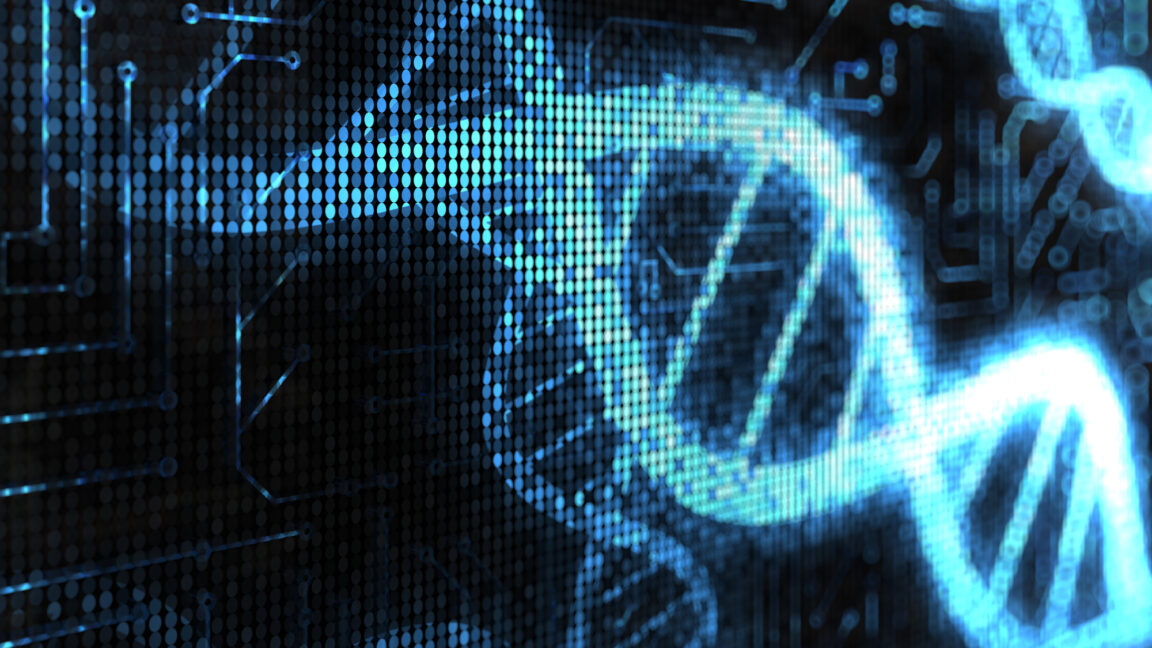
The developers of the system call each of these potentially modifiable spots on the template an epi-bit, with the modified version corresponding to a 1 in a conventional computer bit and the unmodified version corresponding to a 0. Because no synthesis is required, multiple bits can be written simultaneously. To read the information, the scientists rigged the system so that 1s fluoresce and 0s don’t. The fluorescence, along with the sequences of bases, was read as the DNA was passed through a tiny pore.
Pictures in a meta-genome
Using this system, Zhang et al. created five DNA templates and 175 bricks to record 350 bits at a time. Using a collection of tagged template molecules, the researchers could store and read roughly 275,000 bits, including a color picture of a panda’s face and a rubbing of a tiger from the Han dynasty, which ruled China from 202 BCE to 220 CE.
They then had 60 student volunteers “with diverse academic backgrounds” store texts of their choice in epi-bits using a simple kit in a classroom. Twelve of the 15 stored texts were read successfully.
We’re not quite ready for your cat videos yet, though. There are still errors in the printing and reading steps, and since these modifications don’t survive when DNA is copied, making additional versions of the stored information may get complicated. Plus, the stability of these modifications under different storage conditions remains unknown, although the authors note that their epi-bits stayed stable at temperatures of up to 95o° C.
But once these and a few other problems are solved—and the technology is scaled up, further optimized and automated, and/or tweaked to accommodate other types of epigenetic modifications—it will be a clever and novel way to harness natural data storage methods for our needs.
Nature, 2024. DOI: 10.1038/s41586-024-08040-5

